Continuous Delivery Automation Benefits
Explains how automation in continuous delivery improves software reliability, reduces risk, and enables faster, safer deployments through consistent, …
Working software is the tangible, functional output produced during a Sprint, representing a concrete artifact that delivers value to customers.


Working Software is a core artifact in Agile, Scrum, and Lean frameworks, representing the tangible output of a team’s work. It is the product of iterative development, and it demonstrates progress and value delivery. Unlike methods or practices, which define how work is done, working software is the concrete result, the increment produced at the end of each Sprint or iteration.
In Scrum, working software is the primary measure of success for each Sprint, and it forms the Increment artifact. It is inspectable, adaptable, and directly informs decisions, allowing teams to adjust their efforts based on the feedback received. The Definition of Done ensures that the software meets predefined criteria of quality, ensuring that the Increment is valuable, functional, and ready for release.
The significance of working software lies in its ability to provide a real, tangible measure of progress. It aligns teams and stakeholders around what has been completed and what remains. Working software is not just code; it is a deliverable that addresses real-world needs and customer expectations, ensuring teams are always focused on delivering value.
In agile methodologies, working software is the product of continuous feedback and improvement. Teams release increments iteratively, ensuring they are always improving the software and adapting to changing requirements. By focusing on working software, organisations enhance collaboration, increase transparency, and drive continuous improvement. It also encourages adaptive planning, as teams continuously refine their work to meet new challenges and customer feedback.
Working software isn’t just about technical proficiency. It’s about delivering value consistently, responding to customer needs, and ensuring sustainability over time. By focusing on high-quality working software, teams ensure they are not just building features, but creating functional products that drive customer satisfaction, innovation, and business success.
Explains how automation in continuous delivery improves software reliability, reduces risk, and enables faster, safer deployments through consistent, …
Explains how modern business applications use continuous delivery to release new features frequently, reduce risk, and improve customer satisfaction …
Step-by-step guide for running a Sprint Review, including presenting the increment, gathering feedback, updating the backlog, forecasting, and …
Step-by-step guide to building an automated Release Management pipeline for professional developers, covering build, deployment, environment setup, …
Learn how to turn scope creep into an advantage by adopting Agile methods, focusing on value delivery, and adapting to changing requirements in …
Explores the importance of understanding purpose in Application Lifecycle Management, focusing on transparency, customer value, and continuous …
A real-world account of guiding a new Scrum team through their first sprint, covering estimation, story points, sprint planning, and handling …
Explores how Agile transformed product management by enabling shorter release cycles, faster feedback, continuous delivery, and a stronger focus on …
Explains how to maintain clear, measurable quality standards with the Definition of Done, while avoiding confusion with acceptance criteria and …
Learn how to customise Azure DevOps to support Scrum teams, manage backlogs, plan sprints, and improve agile workflows with practical setup and …
Explains the benefits of Visual Studio ALM over alternatives like Git and Jenkins, detailing its comprehensive features for managing the entire …
Learn how to define, craft, and achieve effective Sprint Goals in Scrum, using frameworks like SMART and OKR to align teams, deliver value, and …
Highlights the importance of promptly fixing software bugs instead of managing backlogs, arguing that unresolved defects harm product quality and team …
Explains the difference between subjective goals and the objective Definition of Done in Scrum, highlighting how clear, measurable criteria ensure …
Learn practical steps to help Scrum teams achieve continuous delivery, clarify business value, integrate feedback, and build empowerment within 90 …
Learn DevOps principles and hands-on CI/CD using Azure DevOps Services, Visual Studio, and Azure to improve team collaboration, delivery, and …
Clarifies Scrum guidelines on unfinished work, explaining that items can span multiple Sprints if the Sprint Goal and Done Increment remain intact, …
We partner with businesses across diverse industries, including finance, insurance, healthcare, pharmaceuticals, technology, engineering, transportation, hospitality, entertainment, legal, government, and military sectors.

ALS Life Sciences

Jack Links

Deliotte
Boxit Document Solutions

MacDonald Humfrey (Automation) Ltd.

Kongsberg Maritime

Brandes Investment Partners L.P.

Healthgrades

Slaughter and May

ProgramUtvikling

New Signature

Akaditi

Microsoft

Freadom

Bistech

Higher Education Statistics Agency

Schlumberger

Graham & Brown

Washington Department of Transport

Ghana Police Service

Nottingham County Council

Department of Work and Pensions (UK)

Royal Air Force

Washington Department of Enterprise Services

Slaughter and May

Kongsberg Maritime

Deliotte

Big Data for Humans

SuperControl

Akaditi